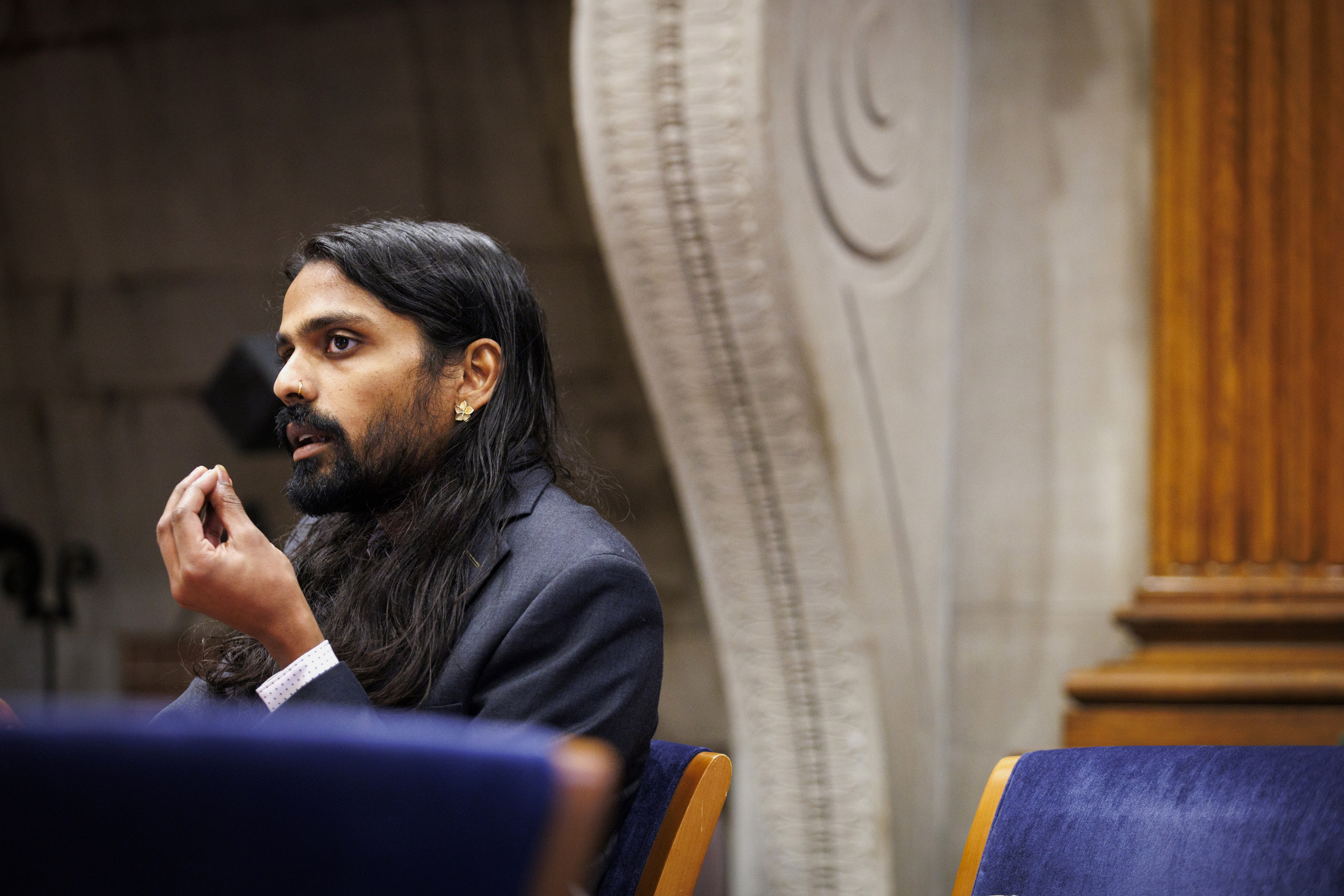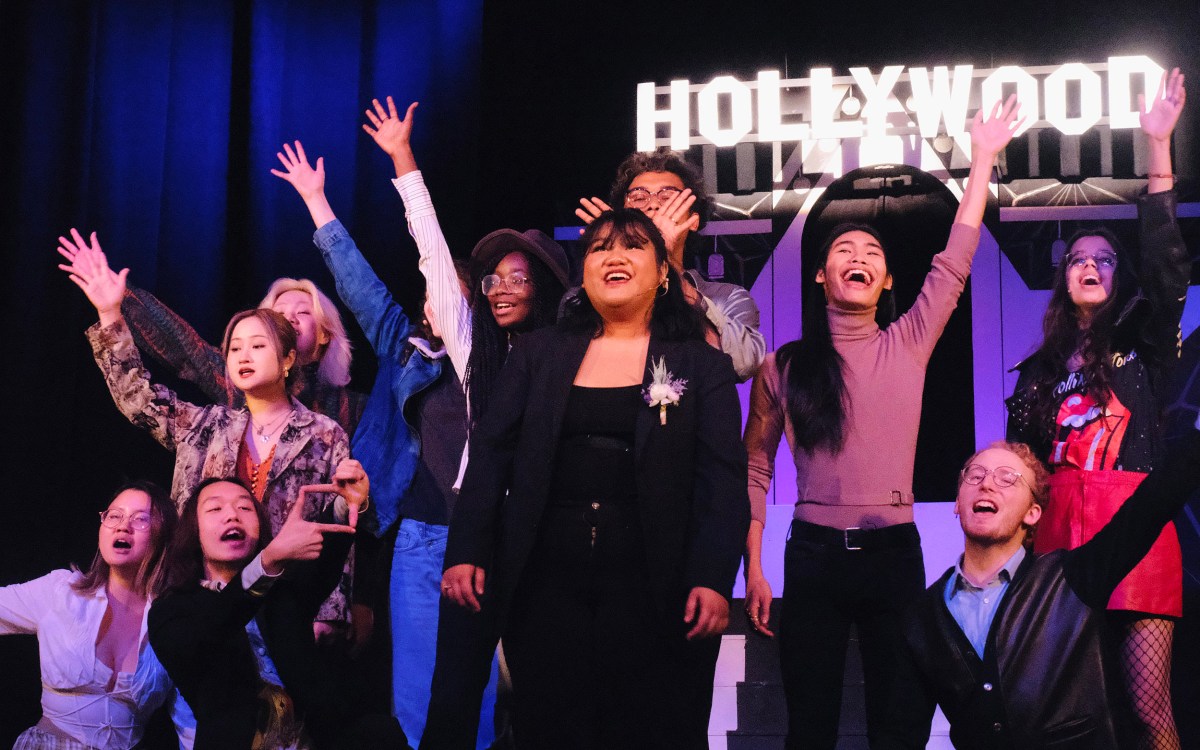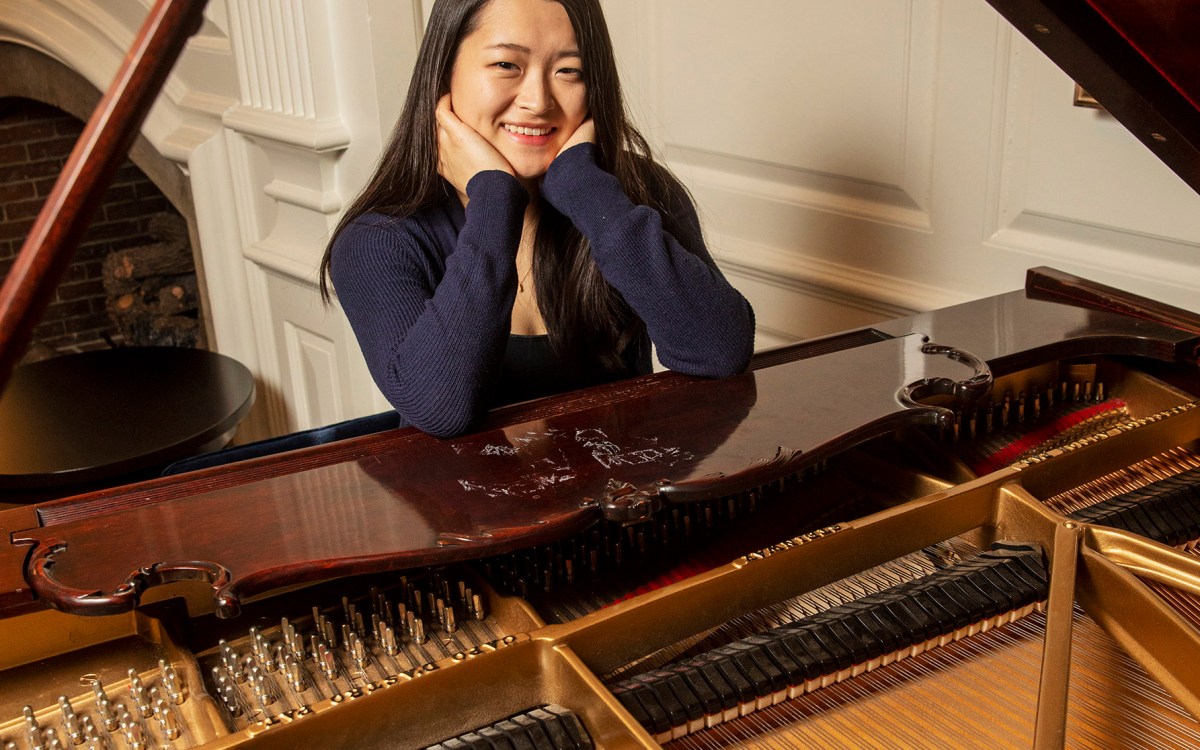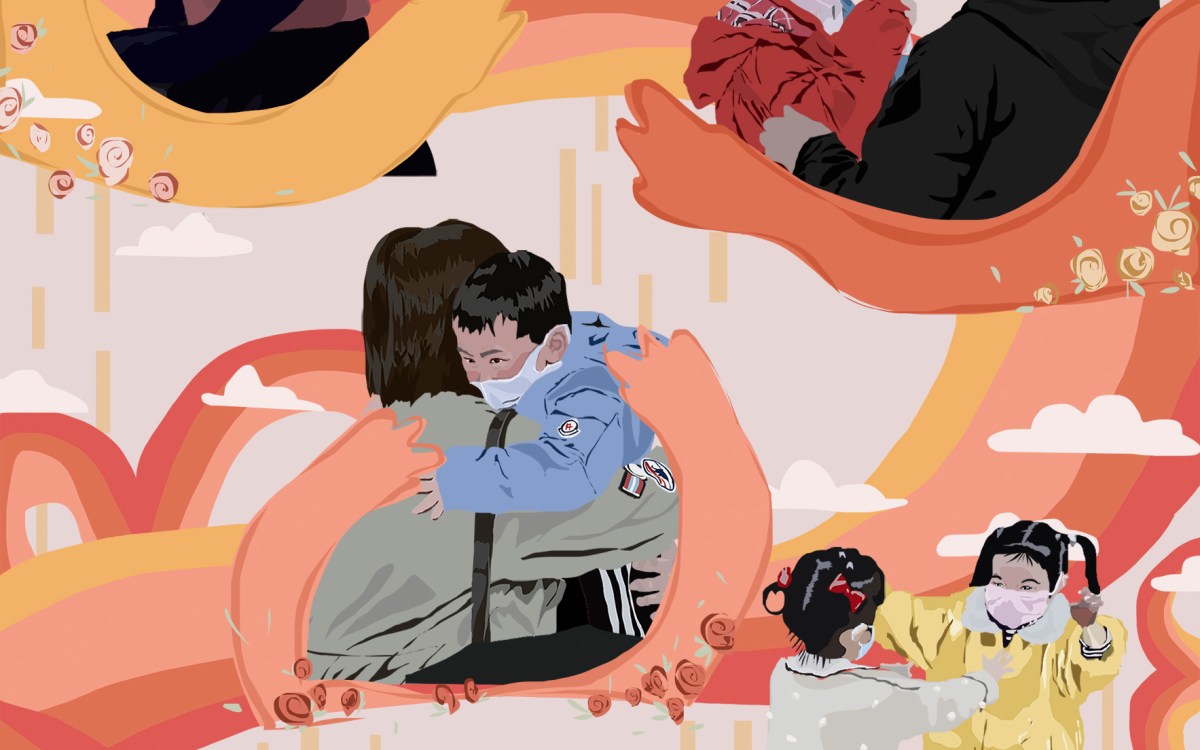
A new Harvard class is studying representations of Asian Americans in films like “Everything Everywhere All at Once” and “Crazy Rich Asians” and the TV show “Ms. Marvel.”
Photo illustration by Judy Blomquist/Harvard Staff
Exploring dimensions of Asian American pop culture
New Harvard course looks at representation in film, TV, music, food
Asian Americans are increasingly prominent in American popular culture, from the Oscar-sweeping “Everything Everywhere All at Once” to the Disney+ series “Ms. Marvel” featuring a Pakistani superhero. But is inclusion and commercial success good enough? How do these cultural representations deal with themes such as identity, migration, and other sociopolitical issues? How do Asian American artists leverage different media for their aesthetic and political goals?
“Contemporary Asian American Pop Culture” — a new class this fall in Harvard’s Ethnicity, Migration, Rights curriculum led by Leslie Fernandez is considering those questions by studying representations in film, TV, music, and food.
“Being Asian in America is very often a process of negotiating and thinking about how America thinks not just about Asians in the home, in America, but also abroad and how these contexts influence each other,” Fernandez said. “That’s one of the things I wanted to do [with this class]. All of the texts are Asian American, but we are also thinking about how they intersect with global ideas around race and transnational contexts around race.”


Students Summer Shen and Joyce Chen; instructor Leslie Fernandez.
Photos by Stephanie Mitchell/Harvard Staff Photographer
An episode of Padma Lakshmi’s “Taste the Nation” on ube, a purple yam ubiquitous in Filipino cuisine, set off a class discussion last month about food and authenticity. Students had just read cultural anthropologist Martin F. Manalansan’s essay “Beyond Authenticity” about introducing his American friends to Filipino food in New York City and how food can represent a “diasporic return.” This sparked a debate about whether foods such as ramen, boba (bubble tea made with tapioca), and galbi (Korean barbecue) have been co-opted or welcomed into American society.
The topic resonated with Zoha Ibrahim ’26, a social studies concentrator who worked throughout high school at her parents’ Indian catering business.
“I noticed that my parents often felt the need to prove their food as ‘authentic’ in ways that other cuisines did not,” she said. “There was often a notion of having to sell food just Indian enough to be exotic and appealing, but not so much that it was alienating.”
Earlier in the semester, students watched and analyzed the commercially successful films “Mississippi Masala” (1991), which explores interracial love between Black Americans and Indians Americans in rural Mississippi, and “Crazy Rich Asians” (2018). Despite the critical success of the latter blockbuster, students critiqued its marketing and premise as a romance film while appreciating its importance to Asian American representation in Hollywood.
Summer Shen ’25 wondered what the films may have sacrificed by appealing to a wide audience. “Do we want to make Asian American pop culture, specifically films, a commercial success?” she asked. “Is that what representation and success is defined by, or do we want to focus on the content?”
Before taking Fernandez’s course, the economics concentrator felt overly critical of Asian American pop culture, especially when representation has been historically so limited, she said.
“This class has really validated some of my frustrations. There is a pressure, because there is representation on screen [to be like] ‘Oh, it’s really good. I should just be really grateful for it,’” she said. “But I learned from this class that it is OK to have critiques.”
For Fernandez, it is important to give students the space to truly understand the importance and relevance Asian American pop culture has to politics and social reproduction.
“What it means to be Asian American is often born out of these spaces,” the lecturer said.







